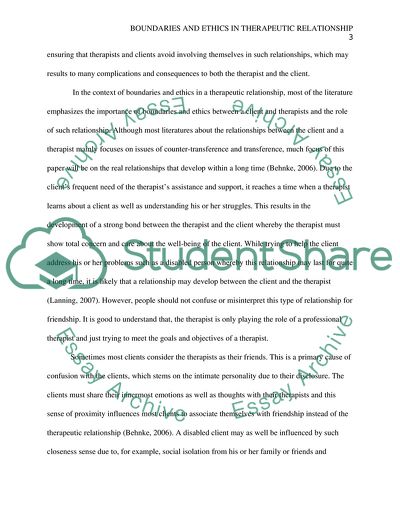Cite this document
(Importance of Boundaries and Ethics in Therapeutic Relationship Essay Example | Topics and Well Written Essays - 3750 words, n.d.)
Importance of Boundaries and Ethics in Therapeutic Relationship Essay Example | Topics and Well Written Essays - 3750 words. https://studentshare.org/ethics/1820837-importance-of-boundaries-and-ethics-in-therapeutic-relationship
Importance of Boundaries and Ethics in Therapeutic Relationship Essay Example | Topics and Well Written Essays - 3750 words. https://studentshare.org/ethics/1820837-importance-of-boundaries-and-ethics-in-therapeutic-relationship
(Importance of Boundaries and Ethics in Therapeutic Relationship Essay Example | Topics and Well Written Essays - 3750 Words)
Importance of Boundaries and Ethics in Therapeutic Relationship Essay Example | Topics and Well Written Essays - 3750 Words. https://studentshare.org/ethics/1820837-importance-of-boundaries-and-ethics-in-therapeutic-relationship.
Importance of Boundaries and Ethics in Therapeutic Relationship Essay Example | Topics and Well Written Essays - 3750 Words. https://studentshare.org/ethics/1820837-importance-of-boundaries-and-ethics-in-therapeutic-relationship.
“Importance of Boundaries and Ethics in Therapeutic Relationship Essay Example | Topics and Well Written Essays - 3750 Words”. https://studentshare.org/ethics/1820837-importance-of-boundaries-and-ethics-in-therapeutic-relationship.


